A Few Days In Rio de Janeiro |
The City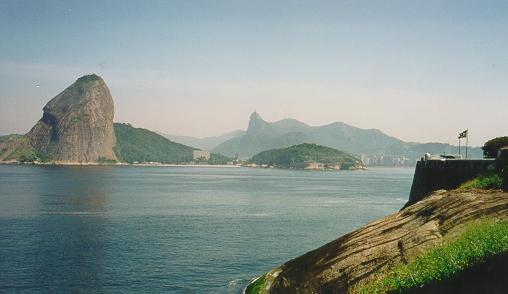 On the left is Pão de Açúcar. The more distant high point in the center is Corcovado, with its famous statue of Christ on the top just visible as a speck in this picture. Downtown is barely visible behind the fort. Corcovado is a bit inland and therefore more central, and higher than Pão de Açúcar, so some say that it offers a better view of the city than does Pão de Açúcar. However, most think the view from Pão de Açúcar is more beautiful, and this is reflected in its greater popularity. The pictures below are all from Pão de Açúcar. 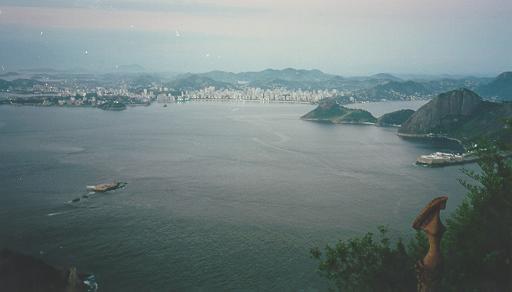 Here we look east from Pão de Açúcar. The spit of land on the right is Fortaleza de Santa Cruz. The city across the bay is Niteroi and suburbs. The small island at left is a former prison. Pão de Açúcar can be climbed by adventurers, but the usual ascent is by cablecar in two stages: first from sea level to the top of Morro da Urca, which is adjacent to Pão de Açúcar but about half as tall, and then from Morro da Urca to the top of Pão de Açúcar itself. 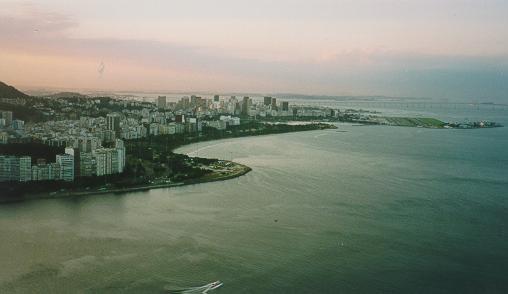 The view of downtown looking north from Morro da Urca. Barely visible in the background at right is a 14 km bridge connecting Rio and Niteroi. In front of that is landfill containing the domestic airport. The international airport is much further in the background. 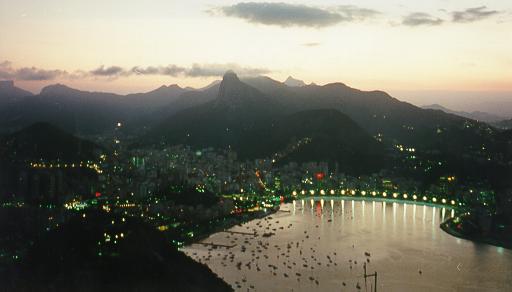 Looking west from Pão de Açúcar. Botafogo Bay is the small arm of Guanabara Bay visible here, with the neighborhood of Botafogo along its shores. Charles Darwin stayed here in 1832 and wrote, "It was impossible to wish for anything more delightful than thus to spend some weeks in so magnificent a country." The top of Corcovado is shrouded in cloud. 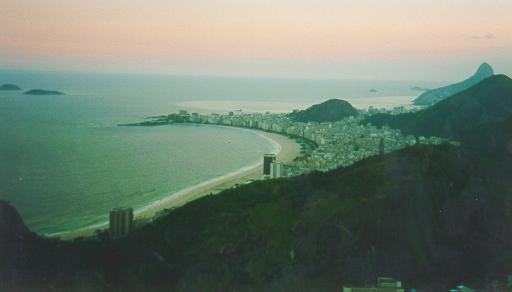 Looking southwest, we see the Atlantic coastline with its famous beaches of Copacabana, visible here, and Ipanema, just behind the ridge. Behind the peak in the background lies Pepino Beach, where the hang gliders land. |
Hang GlidingRio is the only place I know of where an untrained person can easily experience the thrill of hang gliding by hiring a tandem glider and pilot. You also get stunning views of the city and a beach landing. 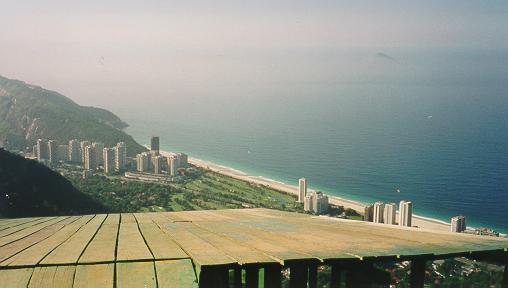 The takeoff platform 500 m above sea level. You and the pilot start here and run off at full speed! Pepino Beach, the landing spot, is easily visible. On a good day with favorable thermals, the flight can last an hour and take you all over the city. On a bad day, the descent takes 10 minutes and encompasses "only" the area shown here, with good views up and down the coastline. If you are in Rio for more than a day or two, be flexible. Have the pilot call you when the winds are favorable, rather than scheduling it for a certain day.
Charles Darwin hiked up a mountain very much like this one and wrote,
"At this elevation the landscape has attained its most brilliant tint;
and every form, every shade, so completely surpasses in magnificence
all that the European has ever beheld in his own country, that he know
not how to express his feelings."
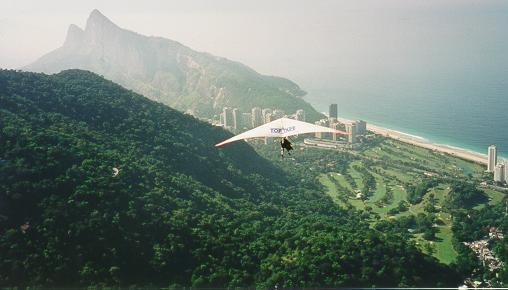 Just after takeoff. This was a poor day with a rapid descent. Afterwards, the pilot showed me pictures of a good day, when you rise after takeoff and find yourself looking down on the platform and eventually on other landmarks such as Corcovado. 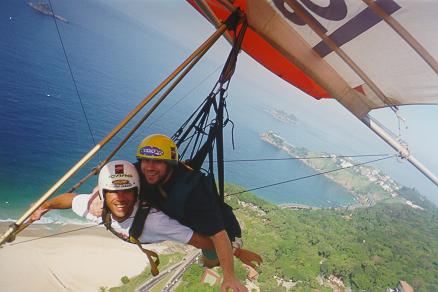
Adrenaline! 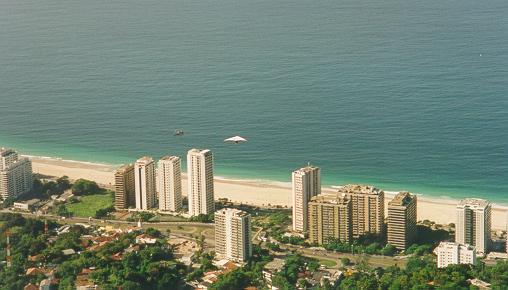
Heading out to the beach in style. |